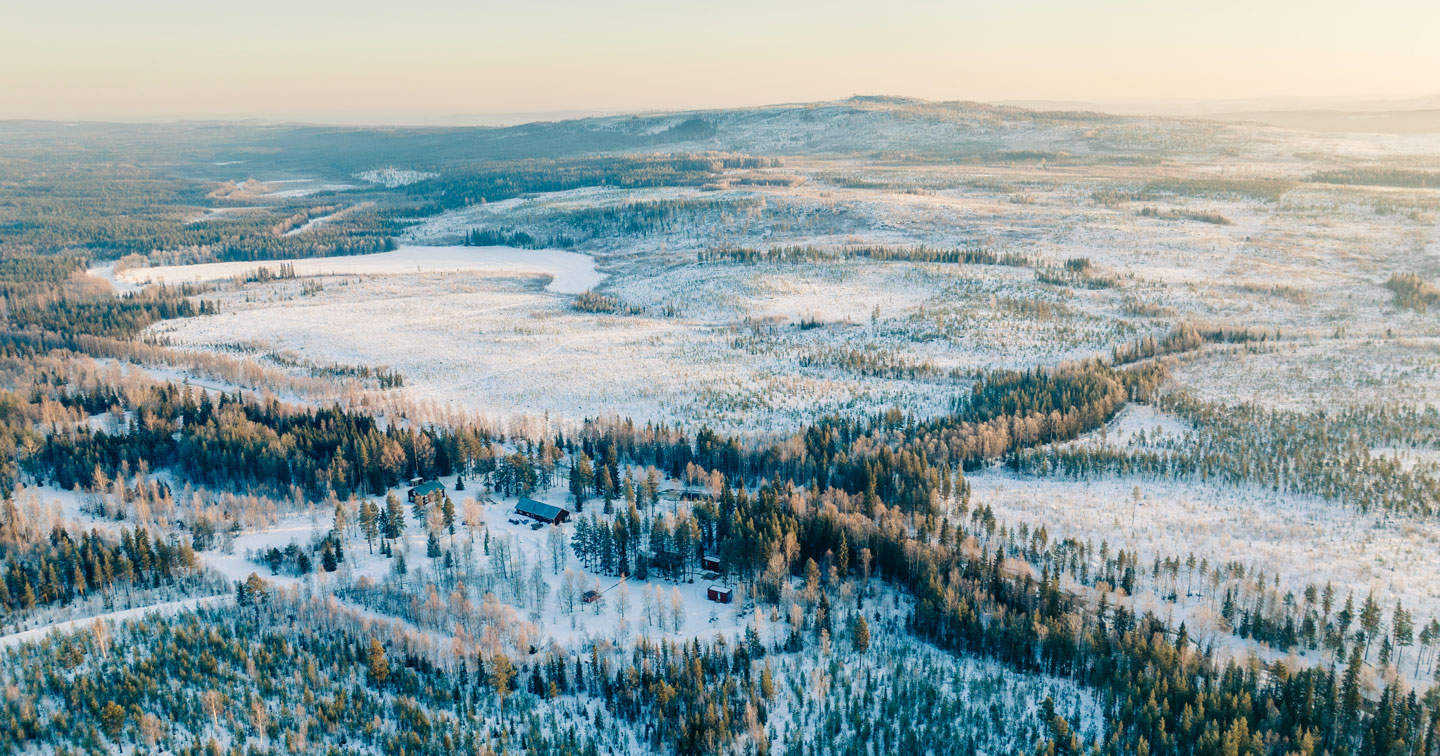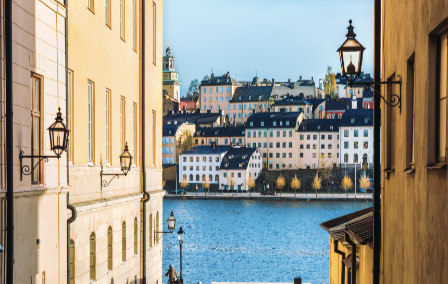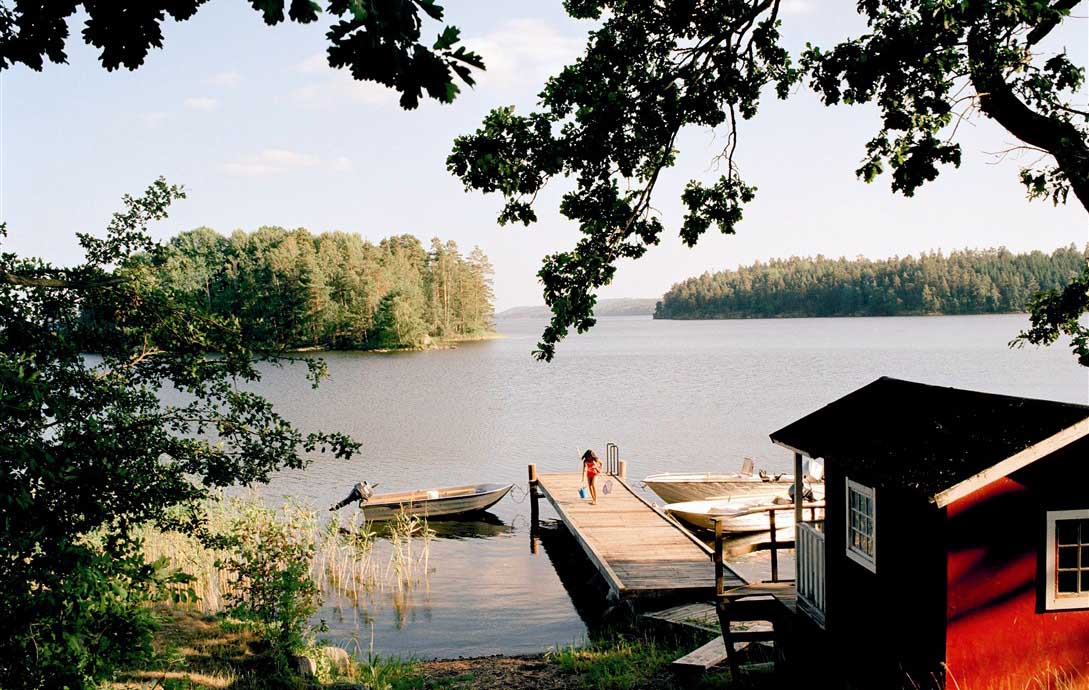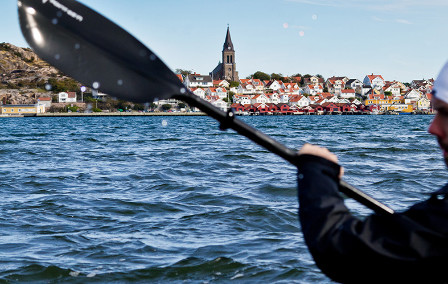Published 17th Feb. 2023
Reading time
With a history as a sovereign state stretching a millennium into the past, it should come as no surprise that the historic sites in Sweden are as vast and varied as the sweeping landmass they call home. The south features mythical castles that harbour the secrets of its long and dramatic history, the surroundings of central Stockholm offer opulent palaces and thought-provoking museums, and the north dazzles visitors with a different kind of historical phenomenon: the Northern Lights. Read on to discover the fascinating tales that can be found in this charming Scandinavian nation.
Nestled on the island of Lovön, just over seven miles from Stockholm, this 17th-century architectural feat is without a doubt Sweden’s best-preserved palace and, to this day, serves as the permanent residence of the royal family. The architecture reflects the European extravagance of its time, with a French baroque style found in both its interior design and delicate facade (giving it the nickname the ‘Versailles of Scandinavia’), as well as Italian Classical touches and a Nordic sasteri roof. Much of the palace is open to visitors all year round, however certain wings of the property are reserved for the private use of the royal family. As for the grounds, every inch of the French-style manicured gardens are open to the public free of charge, every day of the year.
Dating as far back as the sixth century, the three grassy mounds perched in the picturesque countryside outside of Uppsala that make up this elusive site have been the subject of legends, tales and mysteries for generations. Over the centuries, it has been believed by some to be the burial site of gods and kings, while others have simply claimed they are natural lumps of dirt. In 1874, a second excavation of the site concluded that the site was in fact a burial ground of royal status, owing to the luxury weaponry and gold-threaded clothing found alongside bodies. The surrounding area lends itself to cycling or walking after soaking in the historical significance of the site.
While the booming capital of Stockholm offers no shortage of beautifully curated museums, Vasa is a true time capsule, making it one of our favourite historic sites in Sweden. The museum was purpose built around the Vasa, a state-of-the-art warship that was commissioned by the royal family to be the most impressive and extravagantly designed in a fleet of warships during Sweden’s invasion of Poland in the early 1620s. The ship, however, turned out to be not so ‘state of the art’, tragically sinking just minutes into its maiden voyage after a light gust of wind toppled it onto its side in front of countless spectators. The ship was remarkably well preserved thanks to the high level of saline in the waters of the bay, making it the only surviving ship of the era. Audio guides, guided tours and other materials provide a detailed insight into everything from the making of the ship and the lives of its passengers, to a more general overview of Swedish maritime history.
Located on an islet in the southeastern coastal region of Småland, this 800-year-old castle is steeped in history, having, over the centuries, been the site of fierce battles, international politics and royal weddings, as well as once functioning as a women’s prison. Kalmar Castle was originally built as a defensive compound to protect the important trading region from attacks by pirates and other foreign enemies (namely the neighbouring Danes), before later being reconstructed as a Renaissance palace in the 16th century. Today, you can enjoy exploring the nooks and crannies of the castle at your own pace or join a daily guided tour to deepen your knowledge on Nordic history.
While traditional historic sites in Sweden can be found in abundance in the more hospitable climates of the central and southern regions, we wanted to give an honourable mention to the icy lands of the north. And what could be more historical than the timeless Northern Lights? This astronomic phenomenon has been around for time immemorial, but its first cited recording can be found in Stone Age cave paintings dating back 30,000 years, which serves to put even the sixth-century burial grounds of Gamla Uppsala to shame. So, if you’re looking for an alternative sort of historic experience, head to Swedish Lapland to admire a magical light show that has been performing to the luckiest of humans for as long as history itself.

Enthusiasm is contagious, and there’s no better way to get excited about a Swedish getaway than by talking to our travel consultants. Tap into the Swedish wilderness in a specially selected cabin (we’re constantly on the hunt for the best), or fika ‘til you drop in our favourite Stockholm cafes (which we’ve done the tough job of testing out for you). Along with our hands-on Concierge team, we can help you do as the locals do and organise the best activities for your trip, from overnight dog sledging to outdoor cooking.
ENQUIRE NOWPractical advice and inspiration for your next trip

Stockholm or Gothenburg, Gothenburg or Stockholm... As Sweden’s stylish capital (and, more importantly, the birthplace of ABBA), the answer to this question appears to be a no-brainer. What could be more iconic than the hometown of the Swedish supergroup? Yet, as trendy and charming as Stockholm is, Gothenburg also has a lot going for it. Built along Dutch-style canals and blessed with leafy boulevards, Sweden’s ‘second city’ has everything you could want from a lively metropolis – without the crowds.
5th April 2025 - Sweden Culture

From its fairy-tale-like landscapes to its vibrant cities and otherworldly Northern Lights displays, Sweden is an easy country to fall in love with. Beauty abounds in this Nordic nation, and you’ll find plenty to point your camera at, whether it’s the colourful buildings and cobblestone streets of Stockholm, the frozen lakes and sugar-dusted mountains of Swedish Lapland or sweeping wildernesses and sandy beaches of Gotland.
1st February 2025 - Sweden Travel Inspiration

The Swedes know how to embrace the great outdoors, and our Europe specialist, Valeria, discovered what the hype’s all about during her recent research trip. She learnt about lobster fishing, relaxed in a lakeside sauna, slurped fish soup, hopped between islands on ferries and appreciated the country’s eco way of life...Valeria’s trip was nothing short of authentically Swedish. Interested in learning all about it?
20th November 2024 - Sweden Travel Tips

Our team of destination experts will get to know you and your unique requirements for your holiday

We work with you to build an ultra-personalised holiday itinerary with your choice of accommodation, experiences and activities

All of our holidays include little extras designed to make a big difference to your trip, from fast-tracking you through airport check-in and security to our network of local Concierges